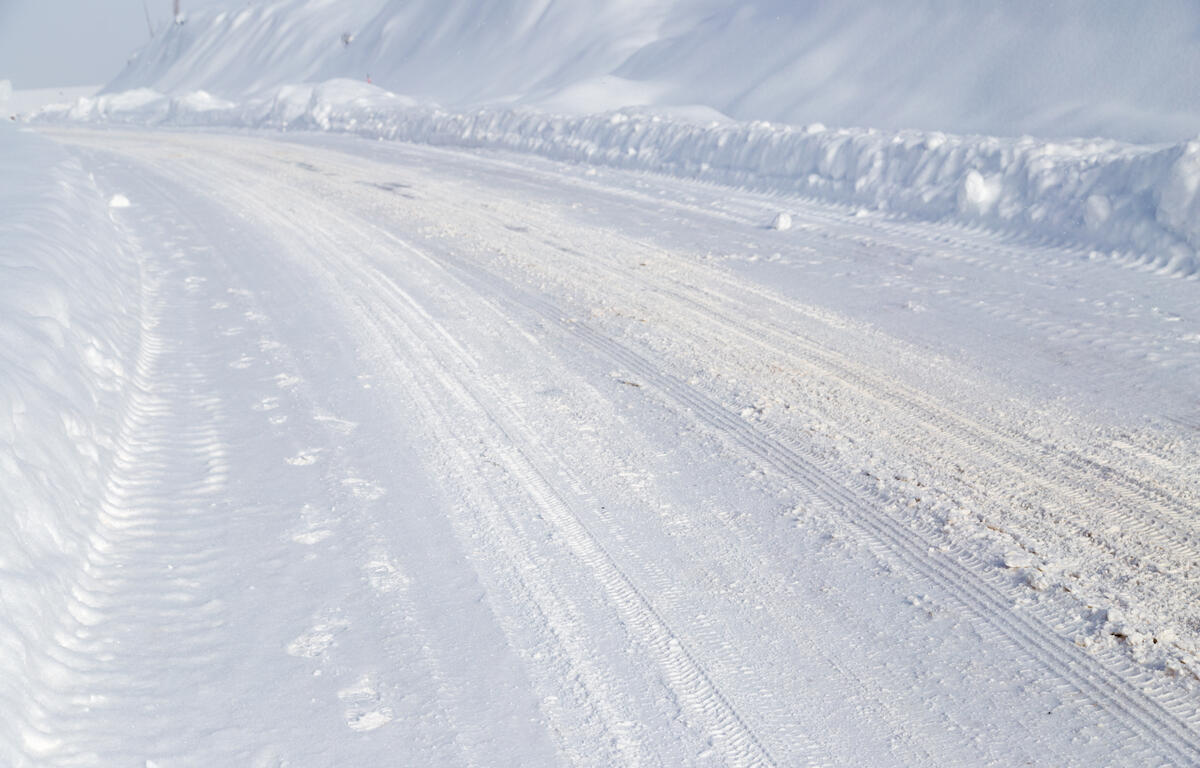CULPEPER, VA (CVILLE RIGHT NOW) – UPDATE 1:30PM, 1/6: The Virginia Department of Transportation is working around the clock as it responds to a major winter storm with 750 pieces of VDOT and contractor equipment. The forecast calls for more snow late Monday afternoon into early evening. Drivers should continue to stay off the roadways to give crews space to safely maneuver as they push snow and treat icy roadways. VDOT’s priority continues to be interstates, primary and high-volume secondary roadways. At this hour, those roadways in Culpeper District are in minor to moderate condition which means they are passable but still have areas that are icy and slick. Crews will begin to plow and treat secondary and residential streets when resources allow.
With more snow on the way, essential personnel should closely monitor forecasts and plan travel accordingly. They should also check 511.vdot.virginia.gov, and map the route through to its destination because conditions can change rapidly. In addition to the snowplows, VDOT has tree and debris removal crews stationed throughout the district to remove fallen trees and other debris to keep roadways passable for the plows. State crews and contractors will be working through this evening to Tuesday morning to push snow and treat an impending refreeze. Remember, bridges, ramps, overpasses, and intersections are the first to freeze.
UPDATE 1/6 6:10AM: As a winter storm continues to move through the commonwealth, the Virginia Department of Transportation (VDOT) needs motorists to stay off the roads throughout Monday so snowplows can safely navigate and push snow. The overnight snowfall, along with a mix of rain, freezing rain and sleet in some areas, has created hazardous driving conditions across much of the western and northern regions of Virginia. Most of the state-maintained roadways in those regions are in moderate condition, meaning there is snow or ice on major portions of the roadway.
Crews are working around the clock to remove snow and treat state-maintained roads until they are passable. Snow removal operations take time, so travelers should not expect to see bare roads during — and for a period after — the storm. Due to the rate of snowfall, snowplows will have to make multiple passes to remove snow. VDOT is responsible for the snow removal of nearly 60,000 miles of state-maintained roads. All cities and some towns maintain their roads, and VDOT may support them, if requested. Once priority roads are passable, crews will move to lower-volume secondary roads and neighborhoods as equipment is available.
Snow removal priorities are as follows:
- The Interstate Highway System and limited-access roadways are VDOT’s first priority.
- Primary roads (routes numbered 1 to 599) and major secondary roads (routes numbered 600 and up) with vital emergency and public facilities, or those with high-traffic volumes, will be cleared along with interstate and limited-access roadways as resources allow.
- Low-volume secondary roads and subdivision streets will be treated after higher-priority routes are completed and additional resources are available.
INFORMATION ON ROAD CONDITIONS
If travel is absolutely essential, drivers should use extreme caution. Check roadway conditions by using VDOT’s free 511 mobile app, which offers information about road conditions, traffic, incidents, construction and congestion as well as access to traffic cameras, weather and more. Information is also available at 511.vdot.virginia.gov or by calling 511 while in Virginia.
Road condition definitions:
- Closed: Road is closed to all traffic.
- Severe: Drifting or partially blocked road.
- Moderate: Snow or ice on major portions of the roadway.
- Minor: Bare pavement except for isolated spots of snow, ice or slush. Driving with caution is recommended.
ORIGINAL:
VDOT just before 10 Sunday night sent out the following release with the message for drivers to “stay home” since the winter storm started:
“The Virginia Department of Transportation is mobilized for the significant winter storm that is moving into Piedmont Virginia at this hour. Forecasts call for heavy snow overnight, with the potential for one inch per hour or more for a period of hours early Monday morning. Drivers should stay off the roadways overnight and during the day Monday to give snowplows space to safely maneuver and push snow.
In addition to the snowplows, VDOT has tree and debris removal crews stationed at each area headquarters and staged on Interstate 64 and I-66 to remove fallen trees and other debris to keep roadways passable for the plows. Other equipment, including tractors and motor graders, will remove snow from intersections and crossovers, and push mounded snow back from shoulders on major roads. In total, there are approximately 750 pieces of VDOT and contractor equipment mobilized for this storm in the Culpeper District’s nine counties.
Snow, possibly mixed with sleet in some areas, is expected to fall at an accelerated rate overnight making driving treacherous across much of the western and northern regions of Virginia. Forecasts call for eight to 13 inches of snow and ice across Culpeper District’s nine counties. The storm is expected to affect the area for much of Monday into Tuesday morning.
VDOT crews and contractors will focus on making high priority roadways, including interstates, primary highways and high-volume secondary roads passable. Due to the rate of snowfall, they will make multiple passes to plow snow as it accumulates. Once priority roads are passable, crews will move to lower-volume secondary roads and neighborhoods as equipment is available.
If travel is essential during the storm, visit 511.vdot.virginia.gov/, call 511 or check the 511 Virginia mobile app for up-to-date information on road and traffic conditions. Remember to check conditions along your entire travel route as conditions may change in other regions of the state.
Local updates about conditions in VDOT’s Culpeper District are posted to Twitter.com/VaDOTCulp. Visit VDOT’s winter weather page for more information about winter weather preparations and response.”



